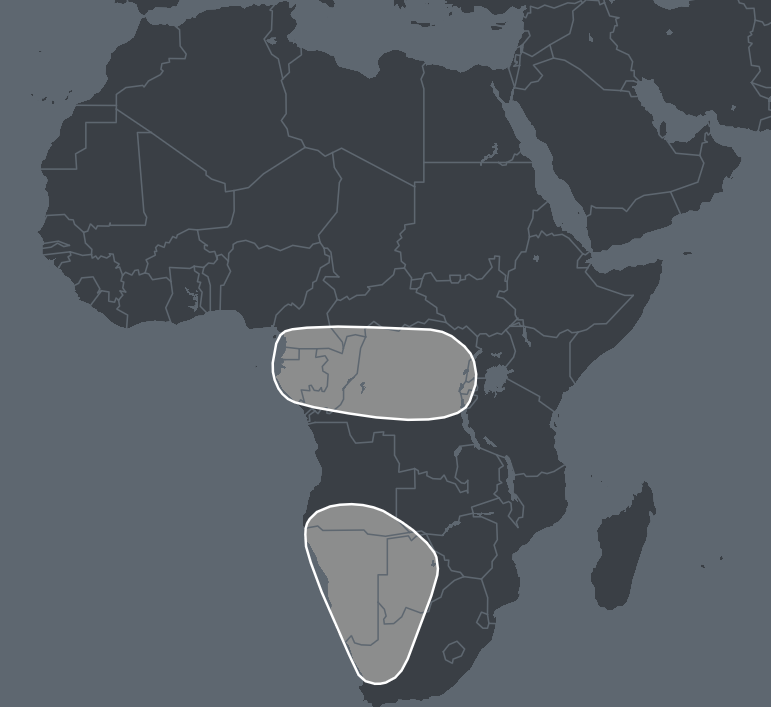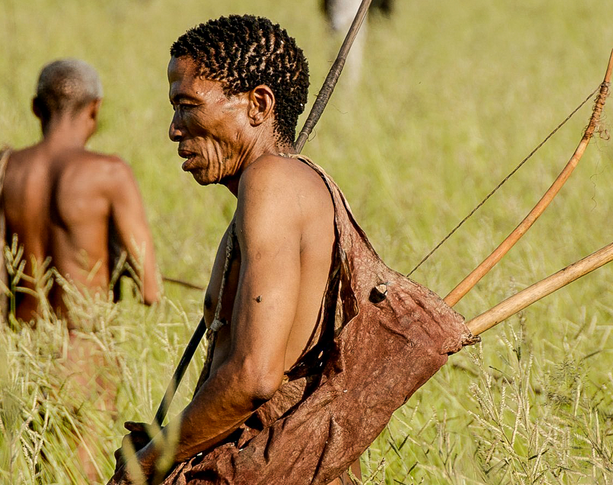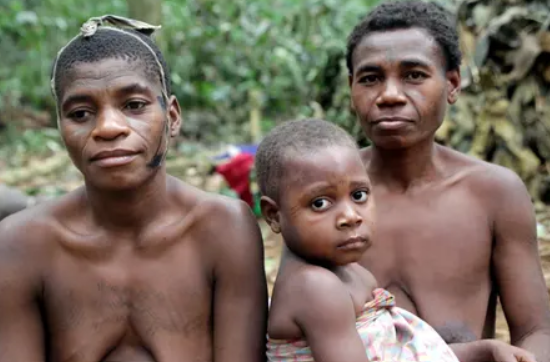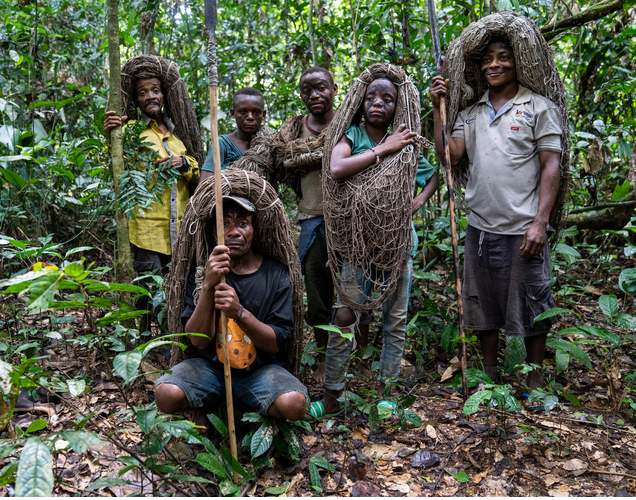What is Khoisan, Aka & Mbuti Peoples DNA Ethnicity on Ancestry?
In this article we will be looking more closely at these peoples and where they come from historically. They are a widespread people with an interesting geography so please read on to find out more.
Khoisan, Aka and Mbuti Peoples DNA Region
Many AncestryDNA regions are named for a specific place but this particular one refers to several groups of peoples in Africa. Also unlike many DNA regions this closely related collection of groups are not concentrated in one area.
Central African Khoisan, Aka and Mbuti Peoples Region
The more northerly range of this collection of ethnic groups is in Central Africa and stretches more than halfway across the middle of the continent. It consists of:
- Southern Cameroon
- Equatorial Guinea
- Gabon
- Northern Democratic Republic of Congo
- Rwanda
- Burundi
- South-west Uganda

Southern Africa Khoisan, Aka and Mbuti People Region
The southern range of this group of peoples falls mainly in the southwest of Africa. It is separated from the Central African populations by the majority of Angola and Zambia. The countries involved are:
- South Angola
- South-west Zambia
- Namibia
- Most of Botswana
- North-West South Africa
History of Africa
According to the paleontological record, it was the continent of Africa in which the first hominids developed. These early hominids were the first to walk in a bipedal motion and it is from them that eventually humans as we know them today evolved.
The fossil records suggest that homo sapiens were living in Africa between 260,000 to 350,000 years ago. Remains from South Africa, Morocco and Ethiopia seem to suggest that homo sapiens were already widespread throughout the continent during that time frame.
Khoisan Peoples
The Knoisan people is a term used to describe indigenous populations in Southern Africa who may formally have been known as Khoekhoen or San peoples. They do not speak the common banyu languages of the region but instead communicate using click languages. They are considered a pre-Bantu group.
It is thought the Khoisan of Southern Africa likely arrived in that region from East or Central Africa as long ago as 260,000 years ago. There are two ancestral Khoisan populations in Africa one in the south which exhibits the mt-DNA haplogroup L0 and the other in Central/Eastern Africa which bears the haplogroup L1-6.

The nearest living relatives of this group are considered the Hadzabe people of Tanzania and the Mbuti pygmies of the eastern Congo.
Thanks to their vast expansion and ultimate separation, likely a result of the megadrought of 130,000 years ago, it is estimated that historically the Khoisan represent the largest human population during the timeline of anatomically modern humans.
The Aka People
The Aka also known as Biaka are what is known as an Mbenga pygmy peoples. They originate in the dense forest regions of the Central African Republic and the northern Republic of the Congo. A largely hunter and gatherer group, they have their own language and tend to only use this or various bantu languages depending on who they interact with regularly.
For a long time the Aka were a very independent group but European colonization, the slave trade and migration of other tribes into their region changed their culture a great deal. Their skills formed as hunter gatherers would be utilized as major ivory hunters. The Aka would hunt the elephants and use other local tribes as go-betweens with traders.

European occupation tried to pin down the Aka people attempting to get them to settle and make use of their labor but they were defiant people who would flee to the security of the forests to avoid being forced into settlements.
With growing economic pressures however the once independent group are having to leave behind the traditional ways and seek employment on the plantations of neighboring tribes.
Mbuti Peoples
Another formerly nomadic pygmy group the Mbuti are one of the Congo’s oldest indigenous peoples. They tend to live in small tribal groups ranging between 15 – 60 people each. They live in settlements but at the start of every dry season they will leave their villages and enter the forest establishing a series of camps.

They practice this to ensure they have the ability to forage for resources over the largest possible range. They are still primarily hunter gatherers and refer to the forest as their mother or father interchangeably.
How Are These Groups Connected?
The Aka and Mbuti as nomadic groups still share a common range and genetically over thousands of years they have been connected through tribal intermarriage. Historically speaking the Khoisan are believed to have migrated to southern African hundreds of thousands of years ago and may well have been part of the groups we know as Aka and Mbuti today.
Although separated by most of Angola the groups share common DNA which strongly indicates that the first Khoisan peoples to arrive in the south may have come from the same central African regions as the Aka and Mbuti.
Why Would You Have Khoisan, Aka and Mbuti DNA?
All three of these groups tend to live a more traditionally African lifestyle so immigration outside of Africa would have been rare. It is however reasonable to suggest that people carrying DNA from this region may have been caught up in the slave trade taking their genetics to the new world.
It is also possible that individuals leave behind the tribal traditions and head to the more developed regions of Africa. From there they may find themselves or their descendants leaving the continent for other areas of the world.
Essentially if this region's DNA appears in your results there is a likelihood that one of your ancestors has a connection to this region. Despite being a huge region all told it does not have any sub-regions that might help pinpoint exactly where and which tribe your ancestor may have been part of.
Can You Trace Your African Ancestors?
As with all things genealogical, there is always a chance that you might be able to trace the origins of your African ancestors. This is of course dependent on a number of factors. Those in the U.S. who know their ancestors arrived as slaves centuries ago may find it difficult to find out exactly where they were taken from.
Due to the highly tribal nature of the Khoisan, Aka and Mbuti peoples our understanding of their DNA population is limited. This means that unlike elsewhere in the world where we might be able to have a more pinpointed region of origin we are left with a broad area.
Depending on how recent our Khoisan, Aka and Mbuti region ancestors are, we may be able to find records to support who they were and why they or their descendants left the country. The further back we go generationally speaking it becomes harder to pinpoint exactly where our ancestor comes from.
Final Thoughts
Descent from the Khoisan, Aka and Mbuti peoples brings a deep connection to the origins of Africa. Even today many of these people try to live to traditional standards although gradually the old ways are dying out through necessity.
This is a group of peoples that share a deep rooted African ancestry and lived off the jungles of their home ranges for countless generations.

Link To or Reference This Page
We spent a lot of time downloading, cleaning, merging, and formatting the data that is shown on the site.
If you found the data or information on this page useful in your research, please use the tool below to properly cite or reference Name Census as the source. We appreciate your support!
-
<a href="https://namecensus.com/blog/what-is-khoisan-aka-mbuti-peoples-dna-ethnicity-on-ancestry/">What is Khoisan, Aka & Mbuti Peoples DNA Ethnicity on Ancestry?</a>
-
"What is Khoisan, Aka & Mbuti Peoples DNA Ethnicity on Ancestry?". NameCensus.com. Accessed on May 10, 2024. https://namecensus.com/blog/what-is-khoisan-aka-mbuti-peoples-dna-ethnicity-on-ancestry/.
-
"What is Khoisan, Aka & Mbuti Peoples DNA Ethnicity on Ancestry?". NameCensus.com, https://namecensus.com/blog/what-is-khoisan-aka-mbuti-peoples-dna-ethnicity-on-ancestry/. Accessed 10 May, 2024
-
What is Khoisan, Aka & Mbuti Peoples DNA Ethnicity on Ancestry?. NameCensus.com. Retrieved from https://namecensus.com/blog/what-is-khoisan-aka-mbuti-peoples-dna-ethnicity-on-ancestry/.
